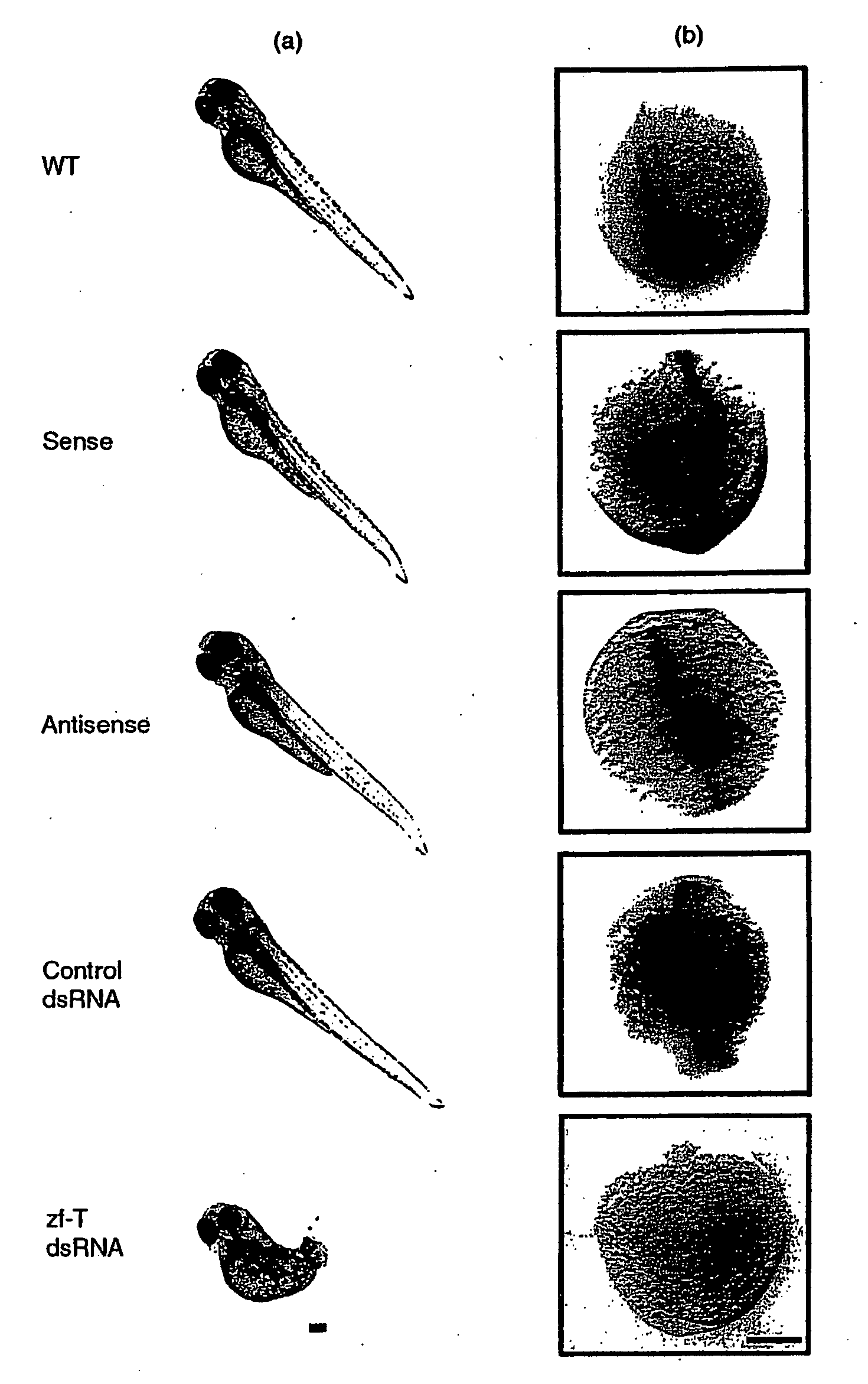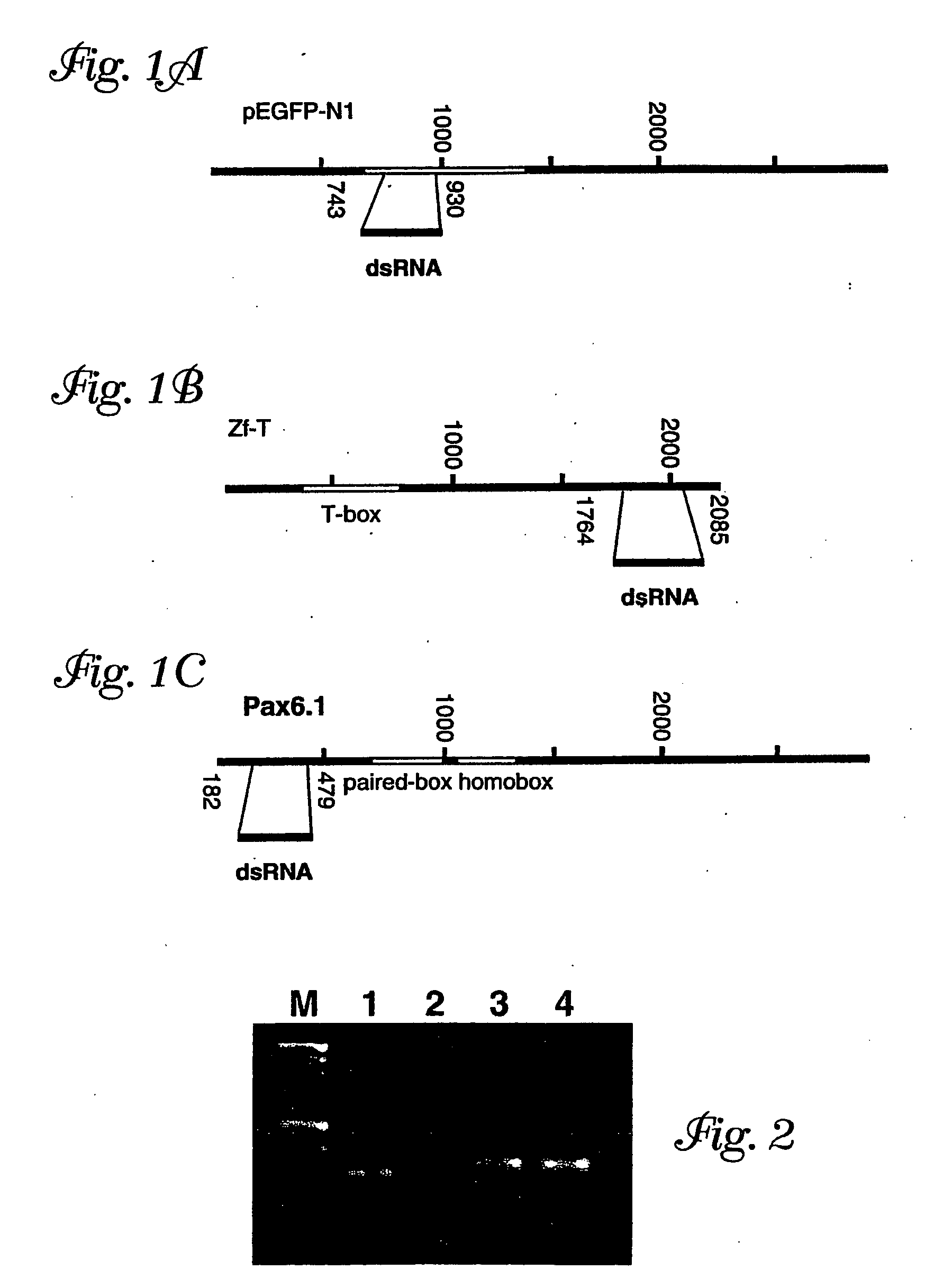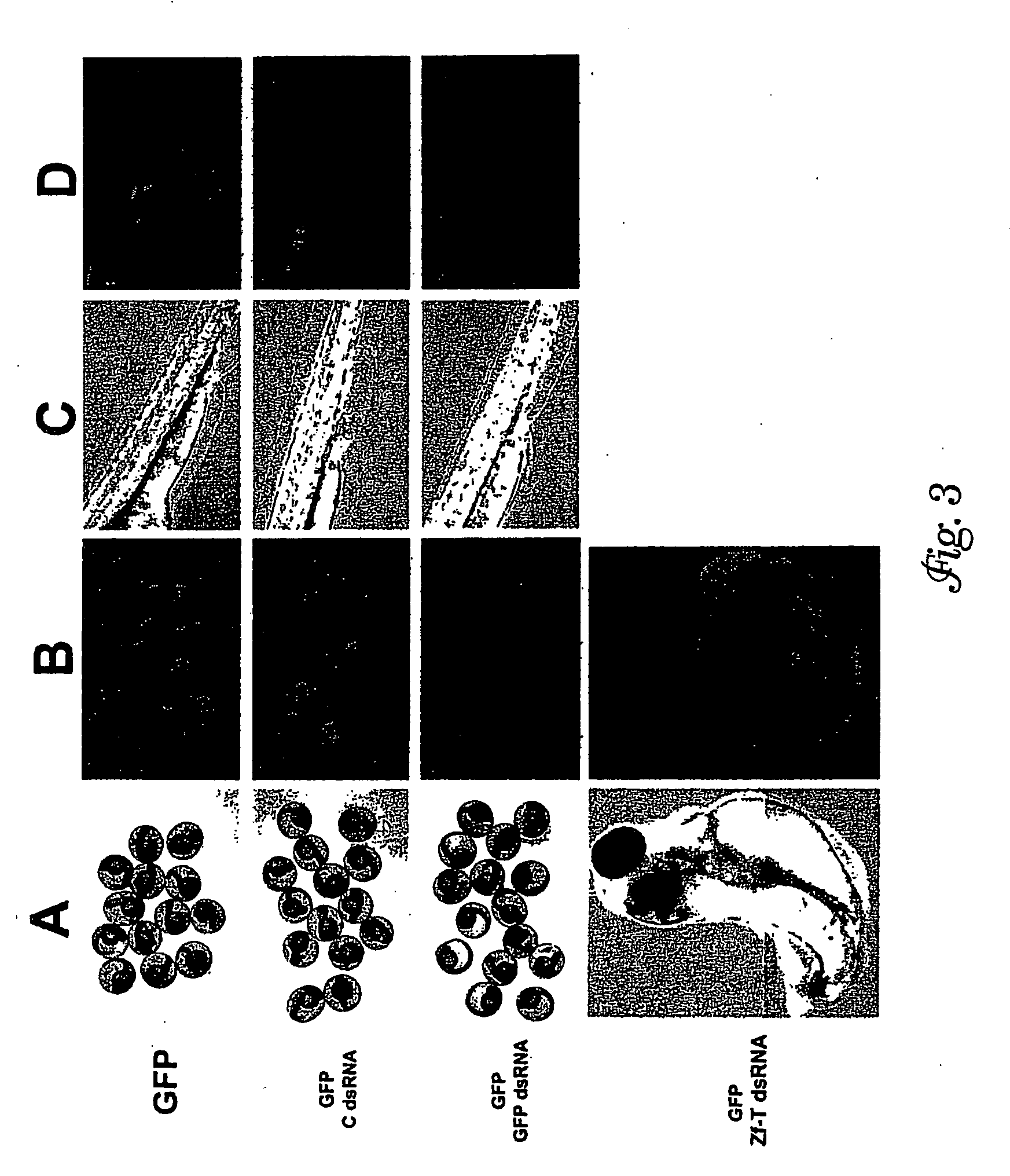Composition and Method for IN VIVO and IN VITRO Attenuation of Gene Expression Using Double Stranded RNA
a technology of double stranded rna and in vivo attenuation, which is applied in the direction of genetic material ingredients, organic chemistry, drug compositions, etc., can solve the problem of inability to obtain successful gene silencing in vertebrates, and achieve the effect of reducing or preventing the rejection response of transplant tissu
- Summary
- Abstract
- Description
- Claims
- Application Information
AI Technical Summary
Benefits of technology
Problems solved by technology
Method used
Image
Examples
examples
[0055]The present invention is illustrated by the following examples. It is to be understood that the particular examples, materials, amounts, and procedures are to be interpreted broadly in accordance with the scope and spirit of the invention as set forth herein.
example i
Double-Stranded RNA Injection Blocks Gene Expression in Zebrafish
[0056]To determine whether double-stranded RNA can attenuate endogenous gene expression, single cell zebrafish embryos were injected with double-stranded RNA specifically targeted to three genes of particular interest: GFP, Zf-T and Pax6.1. The phenotypic role played by GFP has been well-characterized in zebrafish; Zf-T is a reporter gene that has been very useful for dissecting promoter activity in zebrafish embryos; and Pax6.1 is a gene that has been thoroughly studied in other organisms.
Materials
[0057]The GFP expression vector, pEGFP-N1 (GenBank accession number U55762.1), was obtained from Clontech, Inc.
Isolation of Zebrafish RNA
[0058]RNA from staged zebrafish embryos was obtained using the ULTRASPEC RNA isolation kit (Biotecx Laboratories, Inc.). Fifty embryos are sufficient to obtain the necessary amount of RNA
Generation of Double-Stranded RNA
[0059]Zf-T cDNA fragment. A 321 bp Zf-T cDNA fragment (nucleotide numbe...
example ii
Double-Stranded RNA Injection Blocks Gene Expression in Explanted Cardiac Neural Crest Tissue
[0099]Attenuated expression of HirA (GenBank accession number X99375) is known to be associated with increased persistent truncus arteriosus (PTA). Double-stranded RNA was generated from a chick HirA cDNA fragment in essentially the same manner as described for zebrafish in Example I. The upstream primer was 5′ TCTGCACCAGCATTAGCACT (SEQ ID NO:19) and the downstream primer was 5′ TGCTGTGAGAATTCGACTGG (SEQ ID NO:20) yielding a 201 base pair product representing positions 2095 to 2295 of the HirA cDNA sequence.
[0100]Explanted chick neural crest was incubated for 1.5 hours with HirA dsRNA or nonspecific dsRNA (control ntl dsRNA) in DMEM. The concentration of double-stranded RNA applied was approximately 106 molecules per nanoliter. Following exposure to the double-stranded RNA each piece of tissue was washed in PBS prior to placing the tissue into culture.
[0101]FIG. 12 shows that double-stranded...
PUM
| Property | Measurement | Unit |
|---|---|---|
| pH | aaaaa | aaaaa |
| pH | aaaaa | aaaaa |
| temperature | aaaaa | aaaaa |
Abstract
Description
Claims
Application Information
 Login to View More
Login to View More - R&D
- Intellectual Property
- Life Sciences
- Materials
- Tech Scout
- Unparalleled Data Quality
- Higher Quality Content
- 60% Fewer Hallucinations
Browse by: Latest US Patents, China's latest patents, Technical Efficacy Thesaurus, Application Domain, Technology Topic, Popular Technical Reports.
© 2025 PatSnap. All rights reserved.Legal|Privacy policy|Modern Slavery Act Transparency Statement|Sitemap|About US| Contact US: help@patsnap.com



